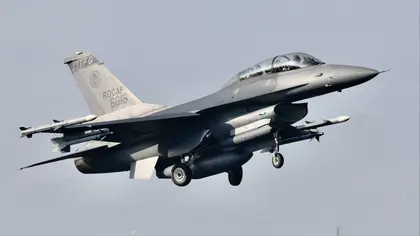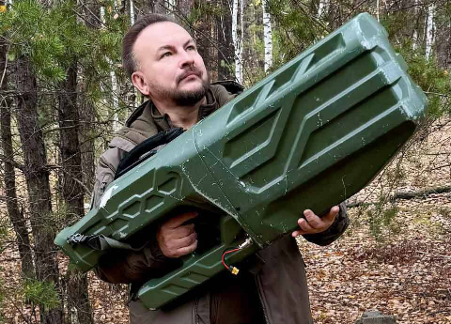1. Are F16s really on the way to Ukraine?
It seems so, but there are still many moving parts that need to be addressed.
JOIN US ON TELEGRAM
Follow our coverage of the war on the @Kyivpost_official.
Following months of lobbying by the Ukrainian Government to get a “coalition of jets”, several countries have now committed to directly train or support the training of Ukrainian pilots on Western jets, including F16s, in the last two weeks. They are: the UK, France, Germany, Belgium, the Netherlands, Norway, Denmark and now, as announced at the G7 Summit, the US.
None of those countries, however, has made a public promise to provide Ukraine with actual F16s. (Poland and Slovakia have previously delivered Soviet-era MiG-29s, some of which are for spare parts only.)
The critical change, however, is that the US, which manufactures and provides the F16 to its allies, has indicated it will lift the ‘veto’ on other F-16 users exporting them to Ukraine. It is believed that Secretary of State Antony Blinken is the main advocate for this change within the Biden Administration.
President Joe Biden agreed with Russia’s contention that the provision of F16s to Ukraine posed a “colossal risk”– for Russia.
2. So, who might provide Ukraine with F16s?
In the case of the US, the answer remains “undecided”. The President’s National Security Adviser, Jake Sullivan, had this to say on CNN at the weekend:

Zelensky Slams Russia’s ’Despicable’ Use of Cluster Munitions in Energy Strikes
“I think that given the number of [F-16s] that are currently available in the warehouses of our European allies and the fact that, based on the money given to us by Congress, there are so many other priorities for systems that can be provided to Ukraine, perhaps we will focus more on third-party transfers, but the President has not yet made a final decision.”
The Netherlands, Belgium and Denmark are considered the main contenders as potential first suppliers of F16s to Ukraine. Norway is in the process of phasing out its current F16s in favor of more modern F35s.
Ukraine’s President Zelensky has hinted at what might happen in comments following the G7 Summit in Hiroshima, Japan. He said:
“As of today, we have a [pilot] training mission. This is the first step. Then, there is the appropriate number of months to train our pilots. I cannot tell you, now, how many planes we will manage to get. I can't say exactly when it will be. We will speed it up [and] I am sure [Ukraine will receive fighter jets], because we already have an understanding of the countries we are working with. We worked with them even before the F-16 training mechanism was unlocked.”
Writing for Kyiv Post in March, retired US Air Force Colonel Jeffrey Fisher said this about who had ‘spare’ F16s:
“Just three months ago, a dozen F-16s were returned to the Netherlands from the unexecuted Draken purchase… The US Air Force has just retired 47 F-16 C/D models and sent them “to the boneyard” [in Tucson, Arizona]. Both the Alabama and Wisconsin Air National Guard units are transitioning from F-16s to F-35s.”
3. How many F16s could Ukraine get?
The Ukrainian Government may be asking for as many as 40 to 60 F16s – or three to four squadrons, according to a senior advisor to Defense Minister Oleksii Reznikov.
In an interview with Politico, Yurii Sak, says that Western leaders were told that the need for modern jets has become more acute, since the Russian Air Force began widespread use of guided glide bombs in March, reaching targets at greater distances. Ukraine currently has “nothing to stop” the Russian aircraft carrying them, he said.
4. When will the F16s get to Ukraine?
There is no timetable yet and there are many things to consider – setting up fighter aircraft operations takes more time than getting M1 Abrams tanks into combat, and that’s scheduled to take four months.
Ukrainian officials are hopeful they could come by the autumn – which would very more or less coincide with the completion of the two-to-six-month pilot training periods, which at least the UK said it will conduct this summer. But other sources say it will take longer.
The limiting factors will be related not just to training pilots, but also to training mechanics and technicians, in addition to making required modifications to airfields and infrastructure.
The timing is not likely to be linked to Ukraine’s pending counteroffensive against Russian-occupied territories. At least that’s the message that Biden delivered at the G7 Summit media conference standing next to Zelensky. There, he said:
"I don't expect the F-16s to be involved in the existing [operations]. Let's say, although it's not the case that tomorrow [the offensive] will begin, or in a week, two, three, seven or ten - it's very unlikely that [the planes] will be used to do that. But they will be used if [the Ukrainians] are successful in the near future, and they will have to continue to fight against the Russians, who have command centers where [the Ukrainians] can't reach.”
Biden also said that Zelensky had given him “an assurance” that F16s would not be used to hit Russian targets beyond the borders of Ukraine.
His National Security Adviser doubled down on CNN yesterday saying that F16s aren’t for the counteroffensive, but are “relevant” for “Ukraine’s long-term ability to defend itself and deter Russian aggression.”
5. Why does Ukraine even need F16s?
Ukraine has already lost approximately 60 aircraft during Russia’s full-scale invasion.
Additionally, beyond its current Soviet-era planes, Ukraine’s Air Force believes that modern fighters could significantly strengthen the country’s air defense. Compared to MiG29s, F16s provide enhanced situational awareness, precision targeting, and interoperability with sophisticated weaponry.
Increasingly, Russia has been deploying long-range ballistic missiles from its bombers, such as the Tu-95 and the Tu-22. The most effective way to defend / prevent such assaults is with a sophisticated and capable jet fighter fleet.
You can also highlight the text and press Ctrl + Enter






